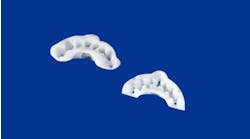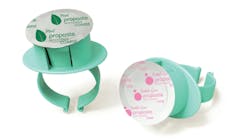It's been nine years since Mark Hartley, the editor of RDH, agreed to the Comfort Zone column. At that time, it would have been hard to predict how much fun it would be to share my thoughts on work place safety, ergonomics, products, and patient care. Thank you for taking the time each month to consider new challenges or new ideas.
Last month's discussion centered on some innovative products that can improve clinical effectiveness. Many unique products increase clinical efficacy or provide better oral health outcomes for patients.
The DIAGNOdent has proven to be a reliable device that evaluates a tooth's structural integrity in a quantifiable manner. The findings are easy to reproduce, and the technology makes sense to patients. Many people originally thought the device was limited to finding teeth that needed restorative dentistry; however, its real beauty is in providing information that leads to diagnoses and clinical recommendations that are appropriate for each case. The readings take the guesswork out of the assessment phase. Can a tooth be sealed, or undergo remineralization therapy, or is the tooth structure so broken down that a traditional restoration is necessary?
The new DIAGNOdent Perio Probe is designed to detect the presence of subgingival calculus in pockets up to 9 mm. The microthin autoclavable tip detects and quantifies both new and residual subgingival hard deposits, and uses the device's laser lightbeam to evaluate subgingival tooth structure. Clinical studies demonstrate that the tip detects more than 80% of subgingival deposits — more than twice the amount of subgingival calculus detected with a conventional periodontal probe.
This new technology is exciting for many reasons. First, it gives us an opportunity to find previously undetectable deposits, which results in a more precise clinical outcome. Second, KaVo's new innovation provides another cost effective use of a device that many clinicians already use. Jeanne Godett, a California hygienist, finds the new DIAGNOdent Perio Probe invaluable. She recommends recalibrating the device periodically on a supragingival deposit to increase accuracy of subgingival findings.
Hu-Friedy's new Symmetry piezo ultrasonic scaler has raised the bar for power-driven scaling. The handpiece is lightweight, balanced, lighted, and features a comfortable textured grip. It attaches to a flexible, low-torque cord. A wide range of tip designs allows this scaler to be used for any type of clinical debridement challenge, from light deplaquing to heavy deposit removal. The popular bladed tips are especially useful for quick removal of heavy stain and tenacious deposits. Activated piezo tips move in a linear fashion. The lateral surfaces of the insert adapt to the tooth surface, which produces a softer, quieter eraser-like movement.
Most piezo tips screw directly into the handpiece and are about one inch long, which creates a challenge to those with diminished pinch grip. Because of their small size, it is very easy to toss a tip in the trash without realizing it. Most piezo tips need to be tightened with a small wrench to ensure that they are seated securely. HuFriedy's Guardian wrench system solves these problems and more. Each tip is housed in its own autoclavable, color-coded wrench that specifies the appropriate power mode and range. Proper use of the wrench, which is about the diameter of a golf ball, prevents over tightening and makes tip removal sure and easy.
Forty years ago, fluoride treatments were brutal. Clinicians mixed stannous fluoride powder with distilled water to create a 0.4% solution. After isolating the mouth with medieval-looking cotton roll holders that clamped under the chin, clinicians applied a foul-tasting solution to exposed tooth surfaces for four minutes. Tray-delivered fluoride foams and gels, and fluoride rinse systems were a welcome change. Now fast forward to fluoride varnish, the newest, easiest, and most consistent professional fluoride delivery system.
Today's varnishes are clear or white, taste good, and are a snap to apply in a variety of settings, from the dental treatment room to a classroom or nursing home. Fluoride varnishes are resin-based. Clinicians must remember to mix the varnish thoroughly and apply a thin layer to both the mid buccal and lingual surfaces to avoid moisture contamination of the applicator. The fluoride will spread across the entire tooth surface after application.
Varnish dries quickly and some patients may be concerned about slight roughness of the surface. The teeth will feel smooth again after the first brushing. Consider redirecting the patient's focus to the unique benefits of a fluoride varnish treatment — a six- to seven-hour sustained-release fluoride exposure. ADA recommendations outlined in a 2006 position paper on fluoride treatments state that the most effective professional fluoride treatment protocols are either a four-minute tray-based gel, or an application of varnish to exposed tooth surfaces. Fluoride varnish systems just make sense.
I doubt there is a dental hygienist on the planet who wants to go back to the days when all patients used hand brushes. Recommendations from dental hygienists over the years have fueled the power brush market, and manufacturers continue to improve product lines beyond our wildest imaginations. Power brushes are here to stay, and most patients benefit greatly from their regular use.
However, some patients will not spend the money on a powered brush. Others have only the means or desire to purchase a manual brush, so there will always be a place for the hand-held brush. On the surface, Sunstar's Summit+ GUM brush looks like any another well-thought-out hand brush, but it is a design breakthrough. The ergonomic, soft-grip handle is comfortable and the compact head fits nicely, even in the most crowded teen or adult mouth.
The real secret lies in the dual-layer bristle configuration, especially in the sensitive version. The top level is composed of extremely tapered hair-like bristles that can slip 2.8 mm below the gum line and reach deeper interproximally than a standard brush. The second layer of soft bristles functions like a traditional brush. Patients and professionals feel the difference in their mouths. The extremely tapered bristles are perfect for those hard-to-reach places like in and around orthodontic appliances or crowded teeth.
Many people don't or won't floss. Their reasons are endless. Rather than scolding, recommend one of the new and innovative interproximal devices that disrupt biofilm and stimulate soft tissue. Sunstar's Soft-Picks are microthin picks covered with tiny flexible projections, a perfect example of an easy-to-use alternative that fits easily into daily life. The flat three quarter inch, easy-to-grasp handle provides effective interproximal cleaning without ever putting your fingers in your mouth.
Sister products XyliMelts and CankerMelts contain a unique bioadhesive backing that sticks tightly to moist soft tissue. XyliMelts contain 550 mg of xylitol per disc and typically dissolve over a 30 to 90 minute period. Xylitol interferes with bacterial activity, stimulates salivary flow, and enhances remineralization. CankerMelts contain collagen and glycyrrhiza extract, a substance found in licorice roots, and provide relief for two to six hours.
Stay tuned to future columns for additional clinical favorites. From my point of view, clinical dental hygiene is still exciting, due in great part to the amazing advancements that keep our clinical comfort zone fresh and challenging.
About the Author
Anne Nugent Guignon, RDH, MPH, is the senior consulting editor for RDH magazine. She is an international speaker who has published numerous articles and authored several textbook chapters. Her popular programs include ergonomics, patient comfort, burnout, and advanced diagnostics and therapeutics. Recipient of the 2004 Mentor of the Year Award, Anne is an ADHA member and has practiced clinical dental hygiene in Houston since 1971. You can reach her at [email protected] or (832) 971-4540, and her Web site is www.anneguignon.com.





